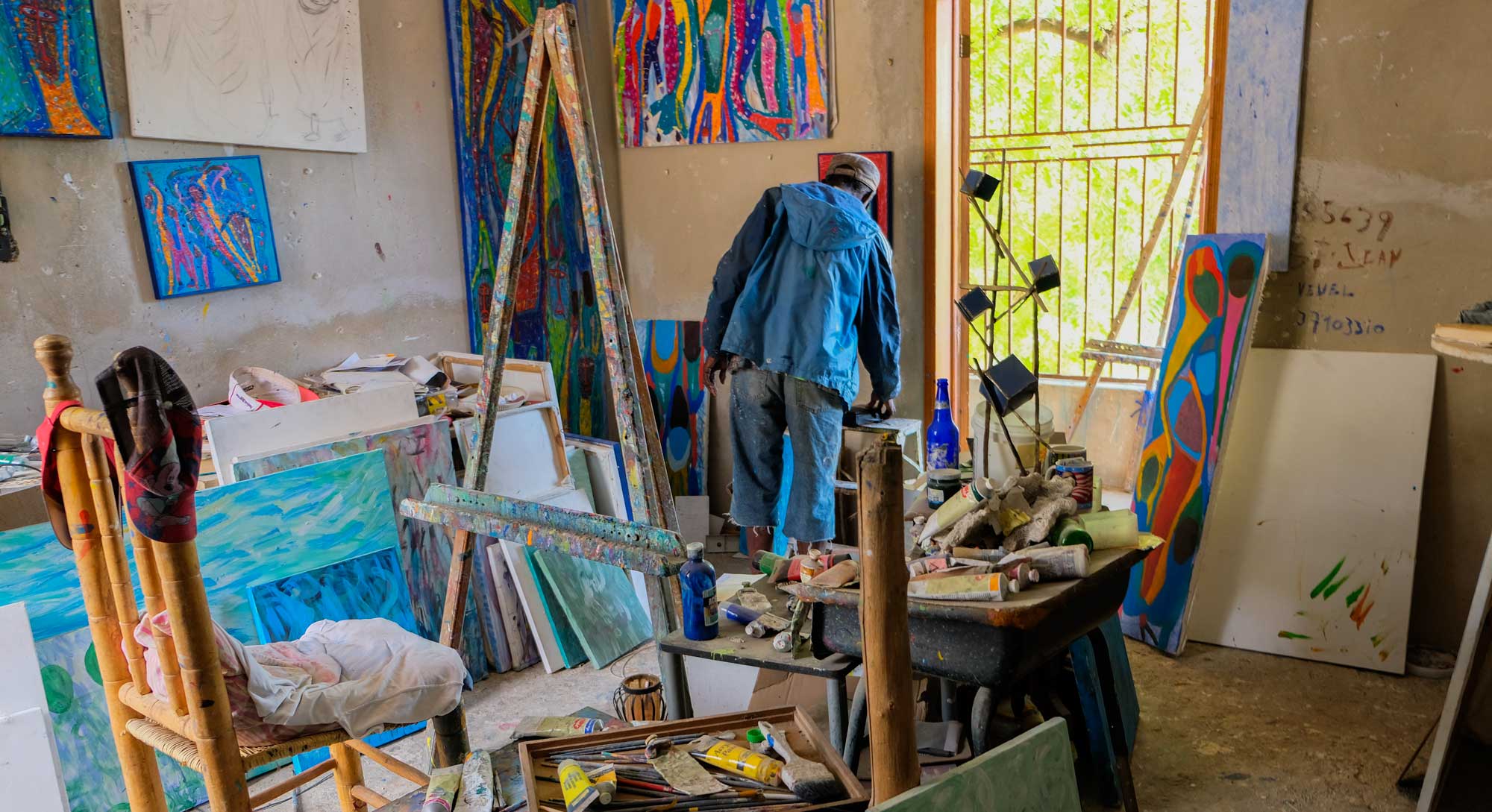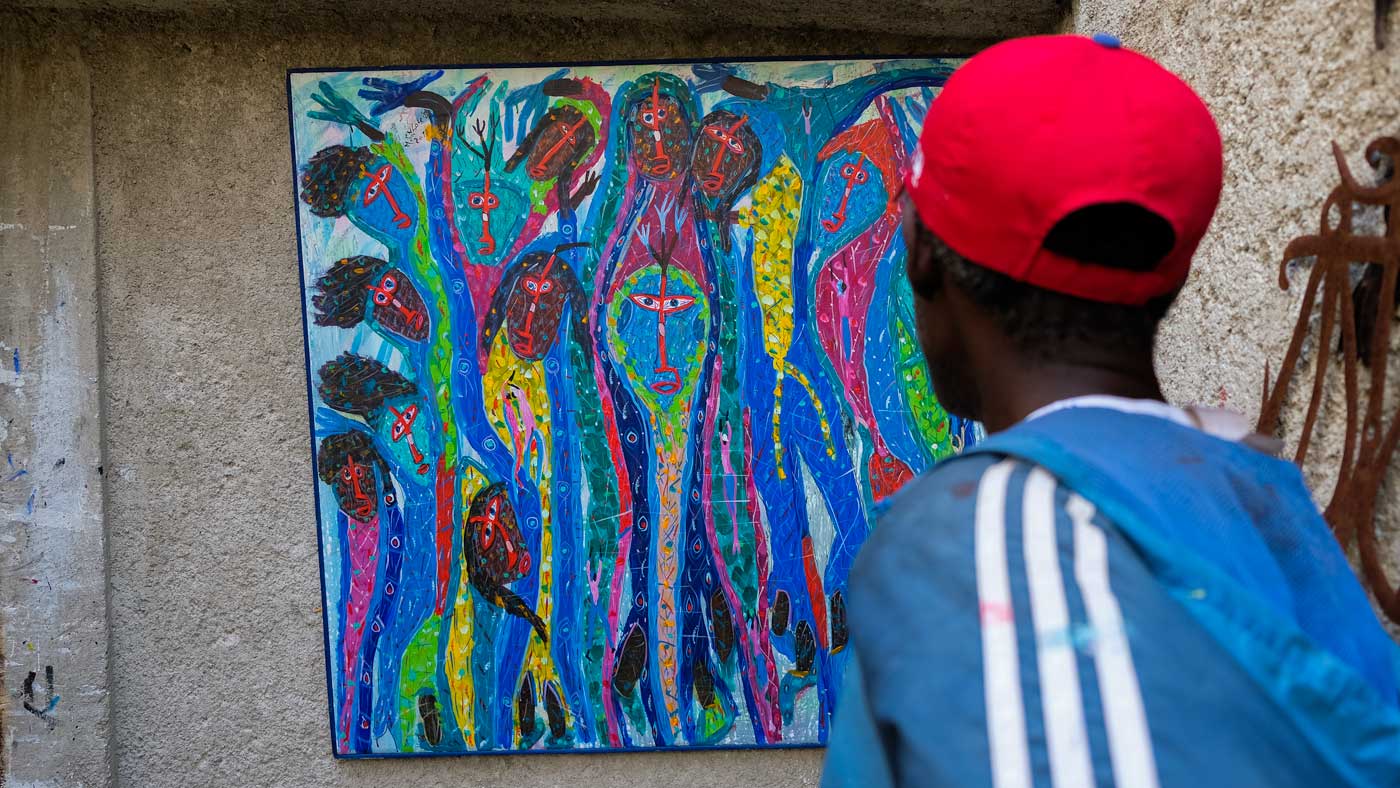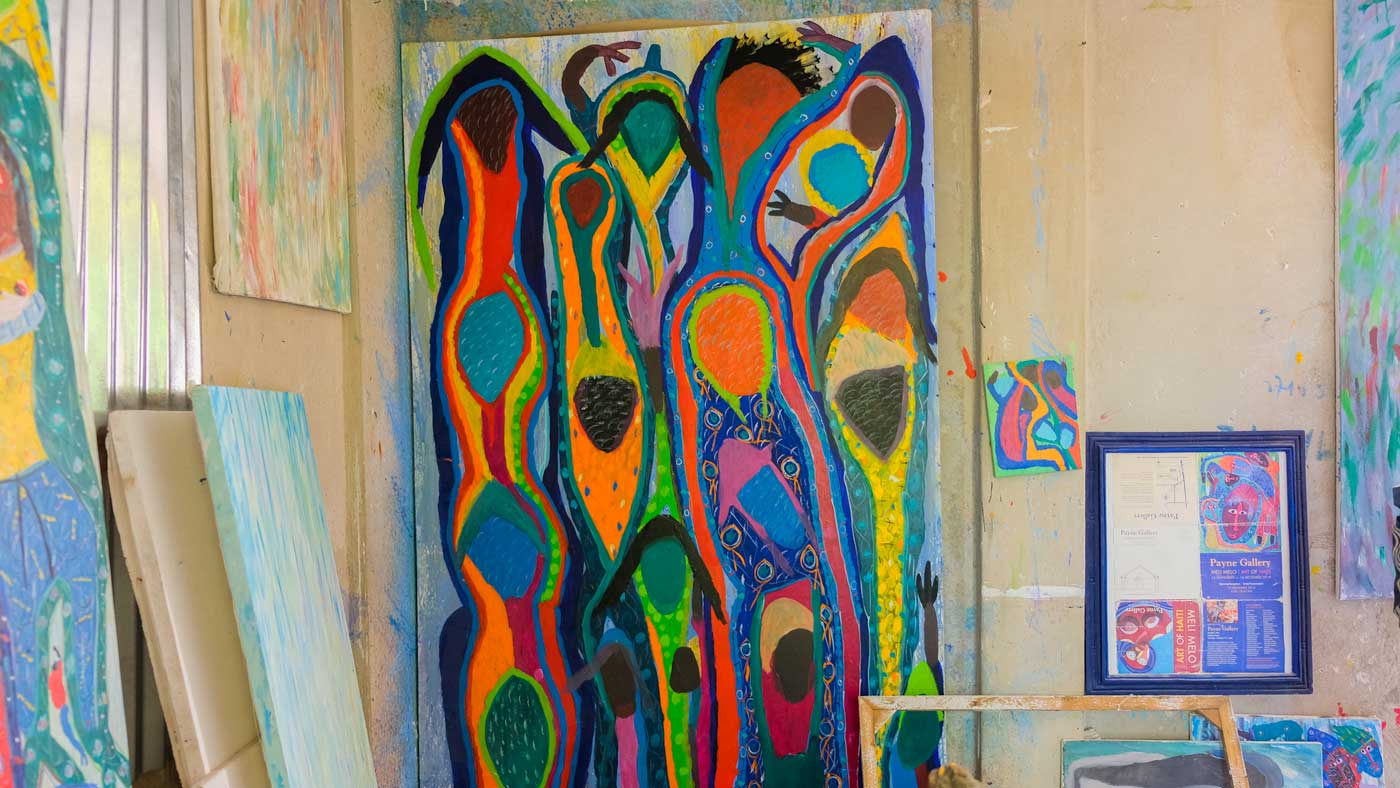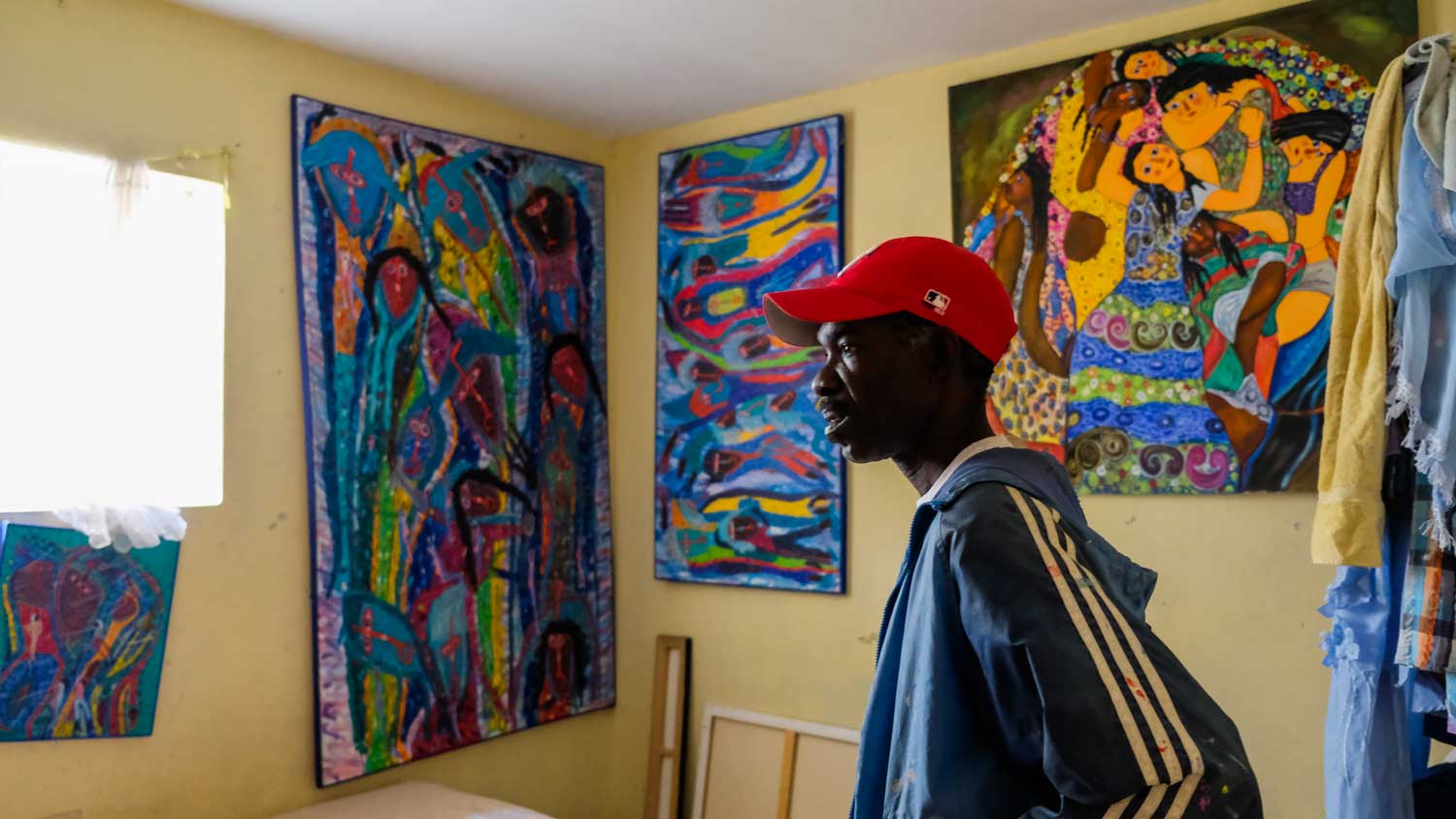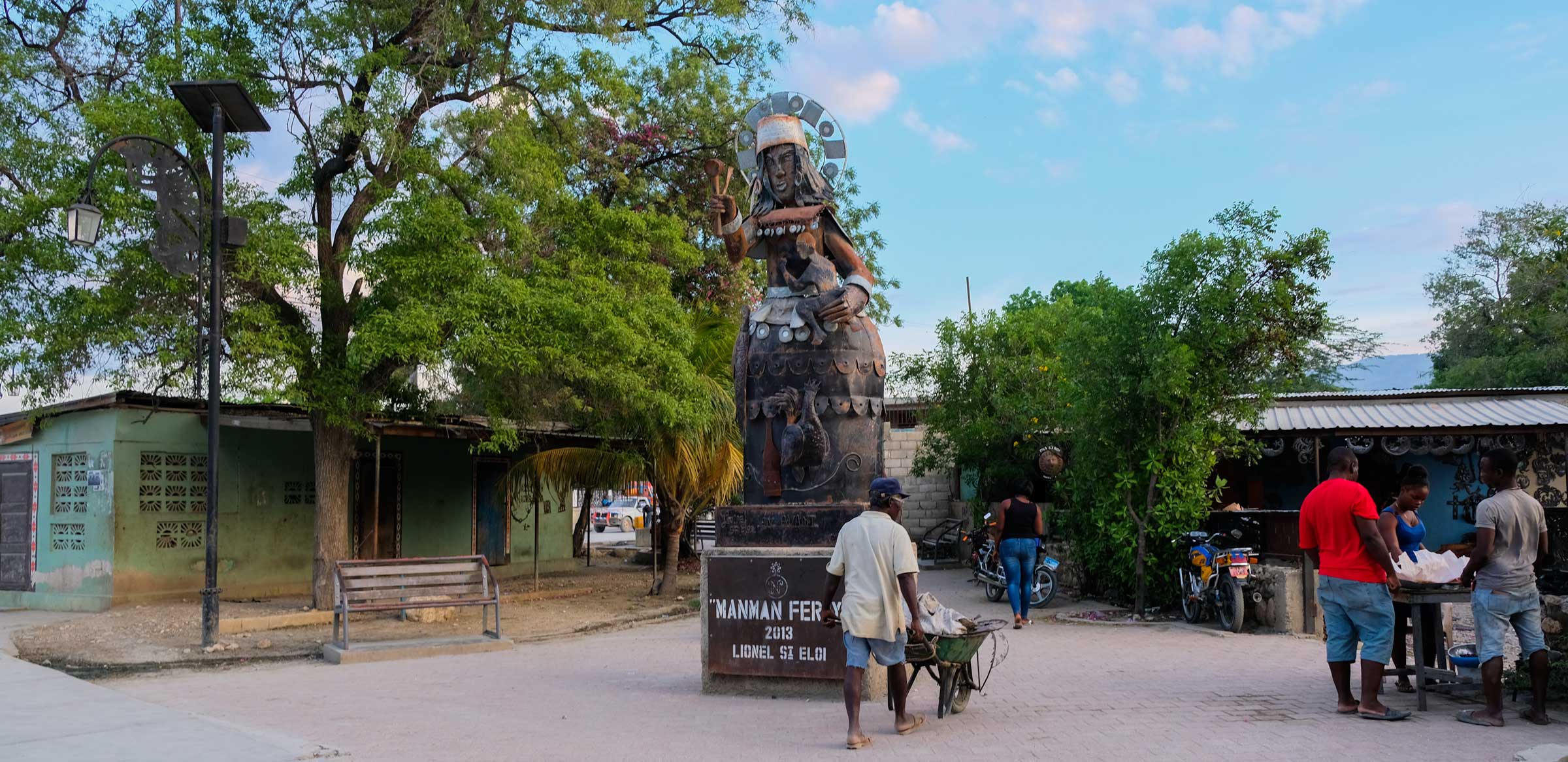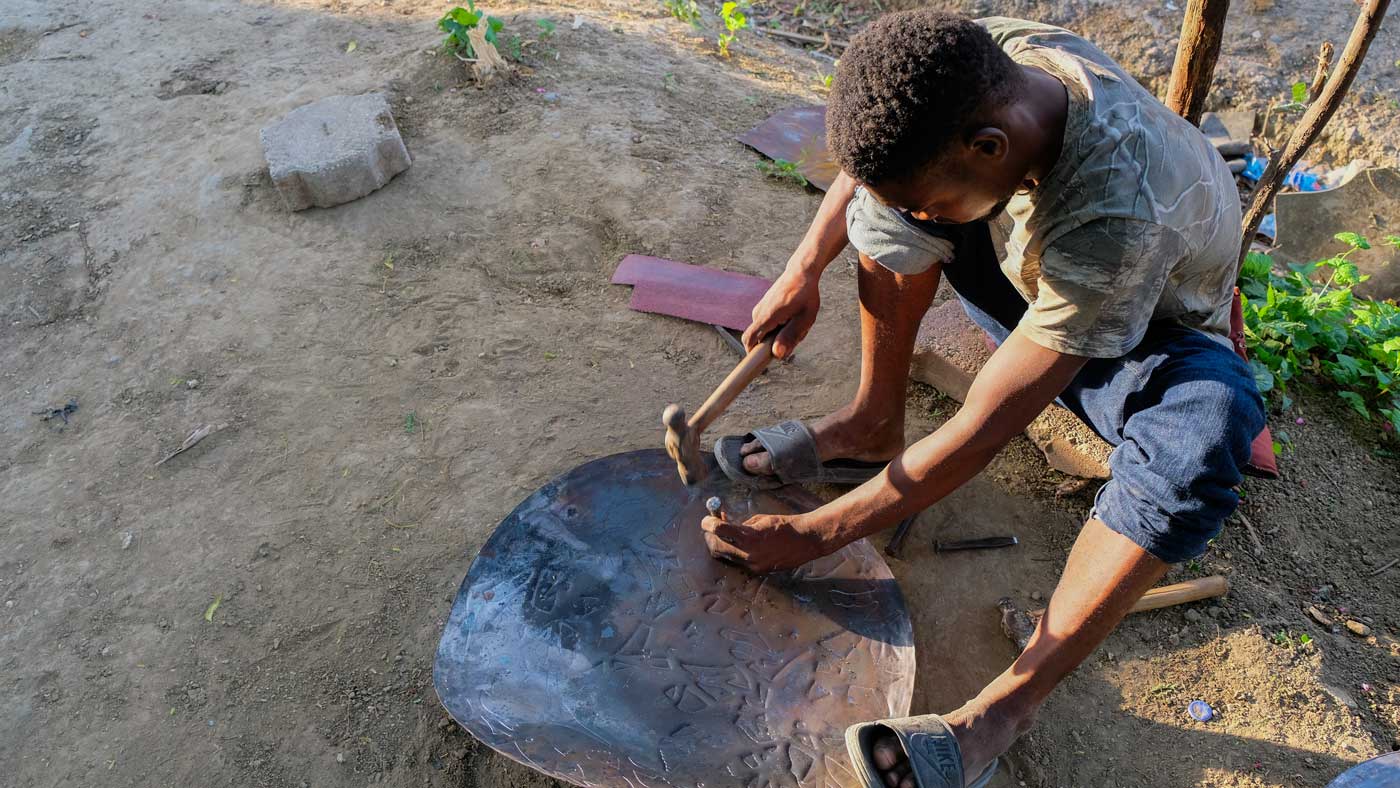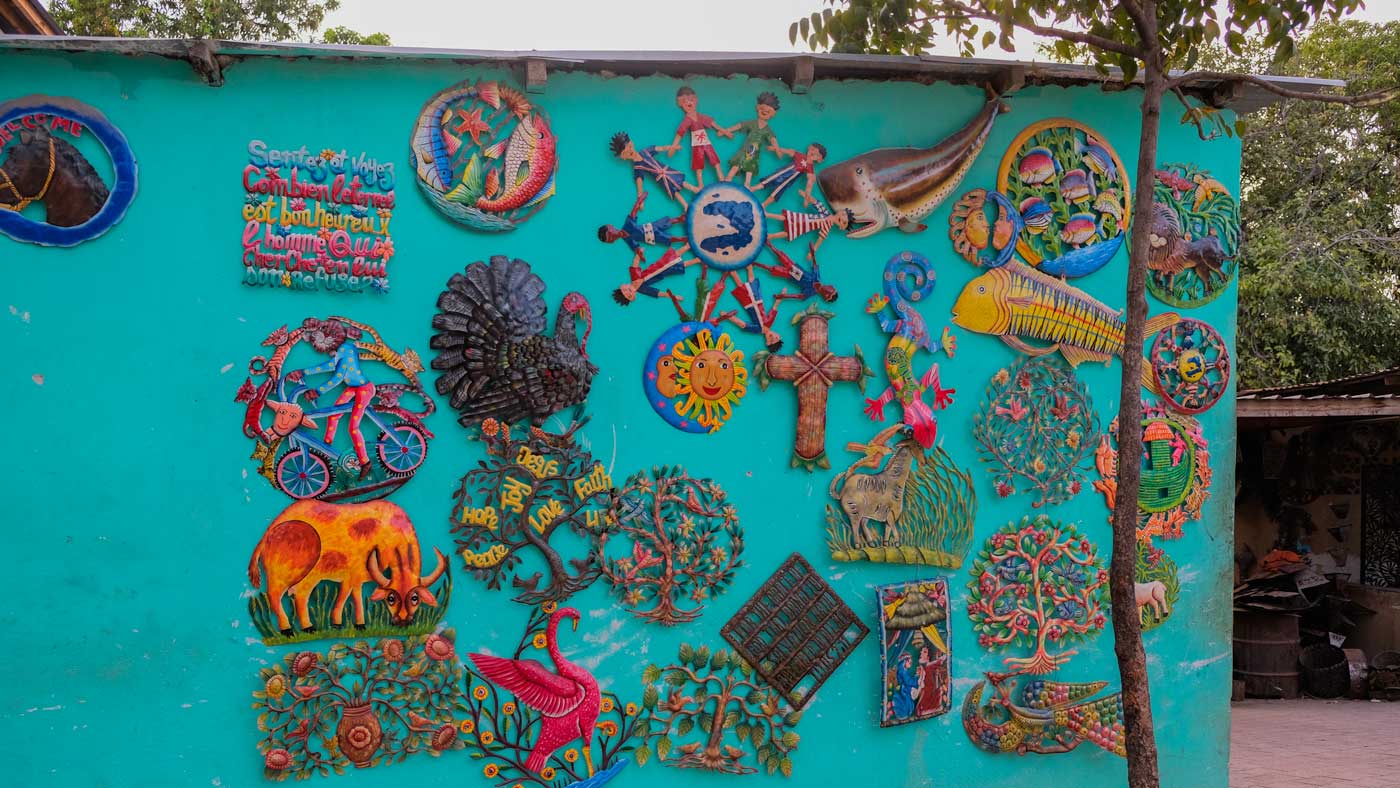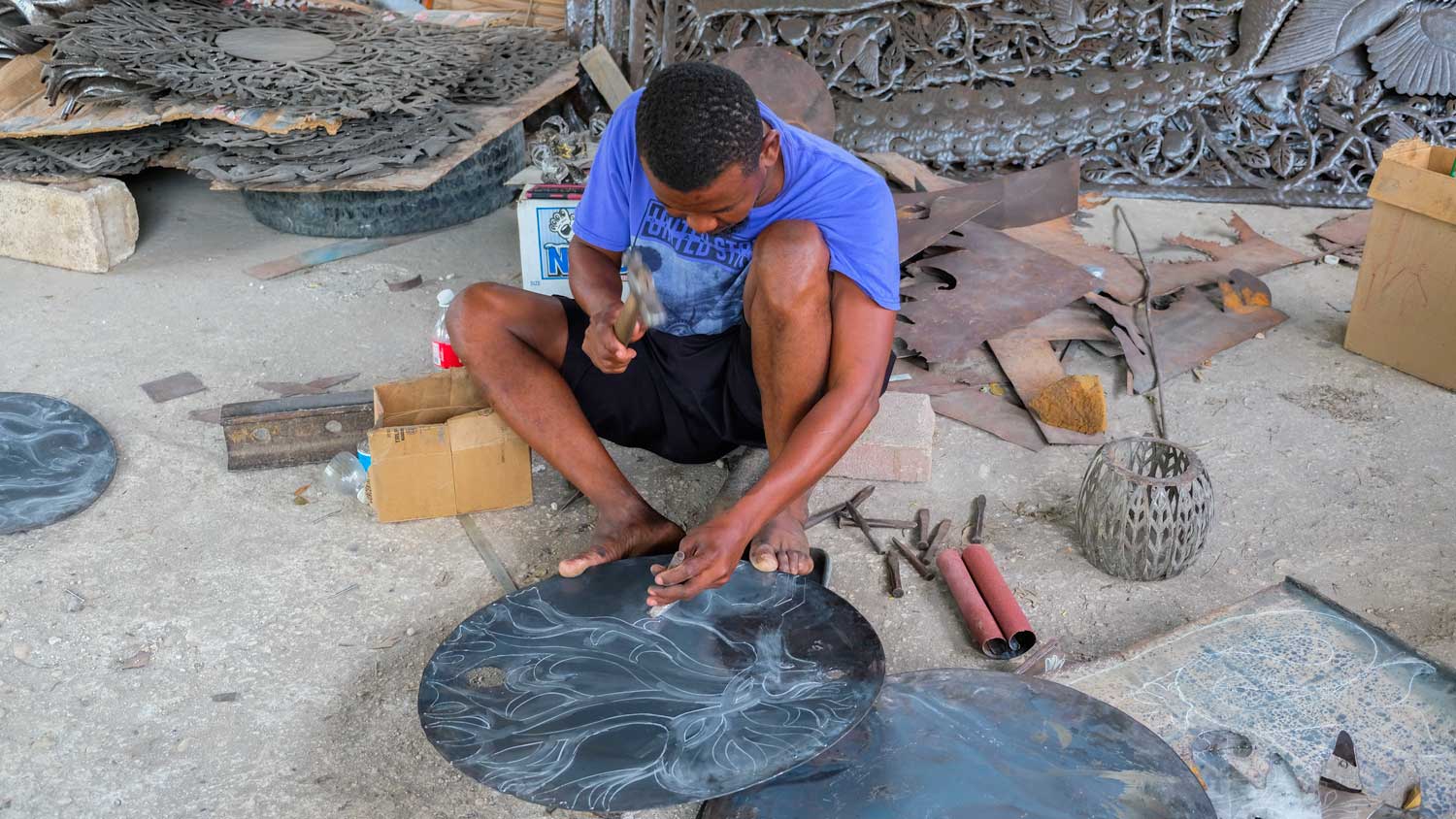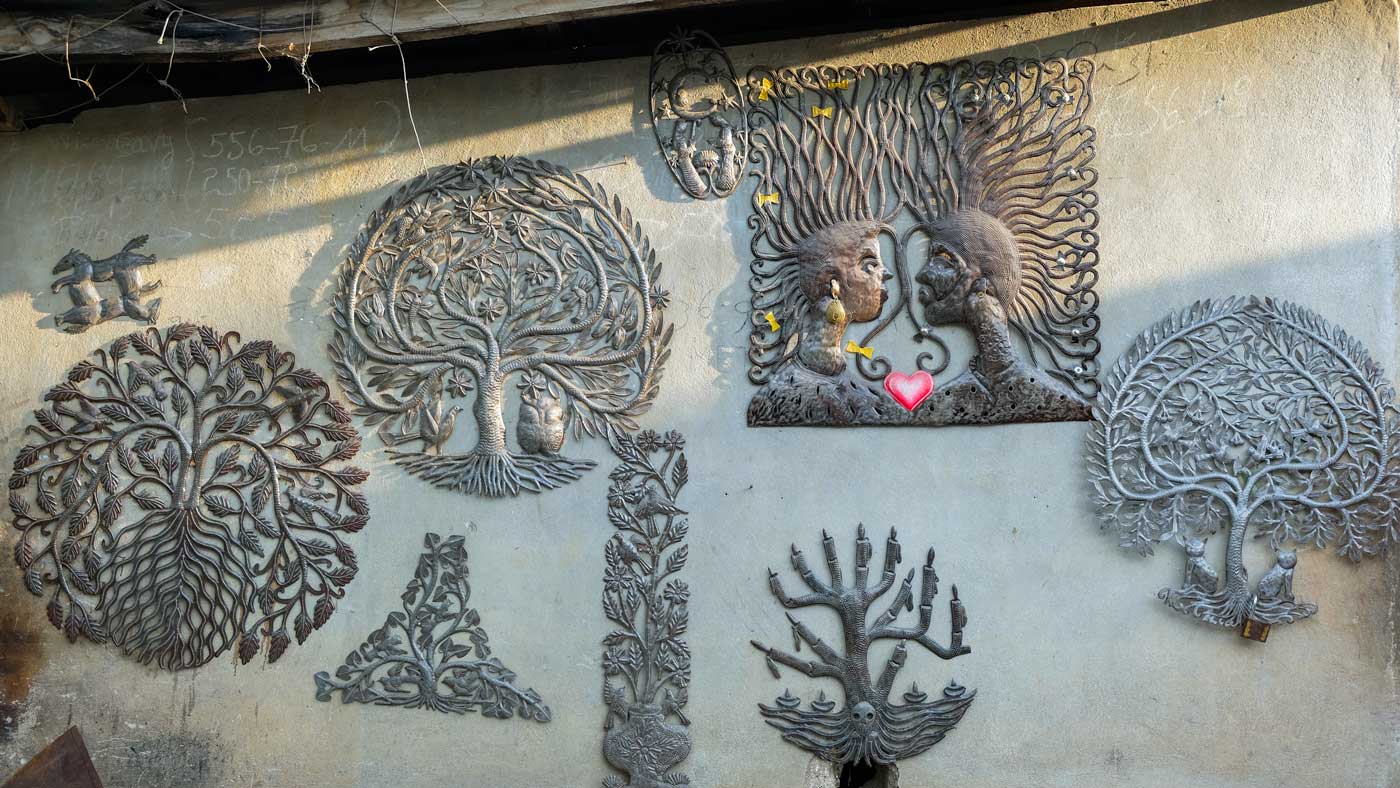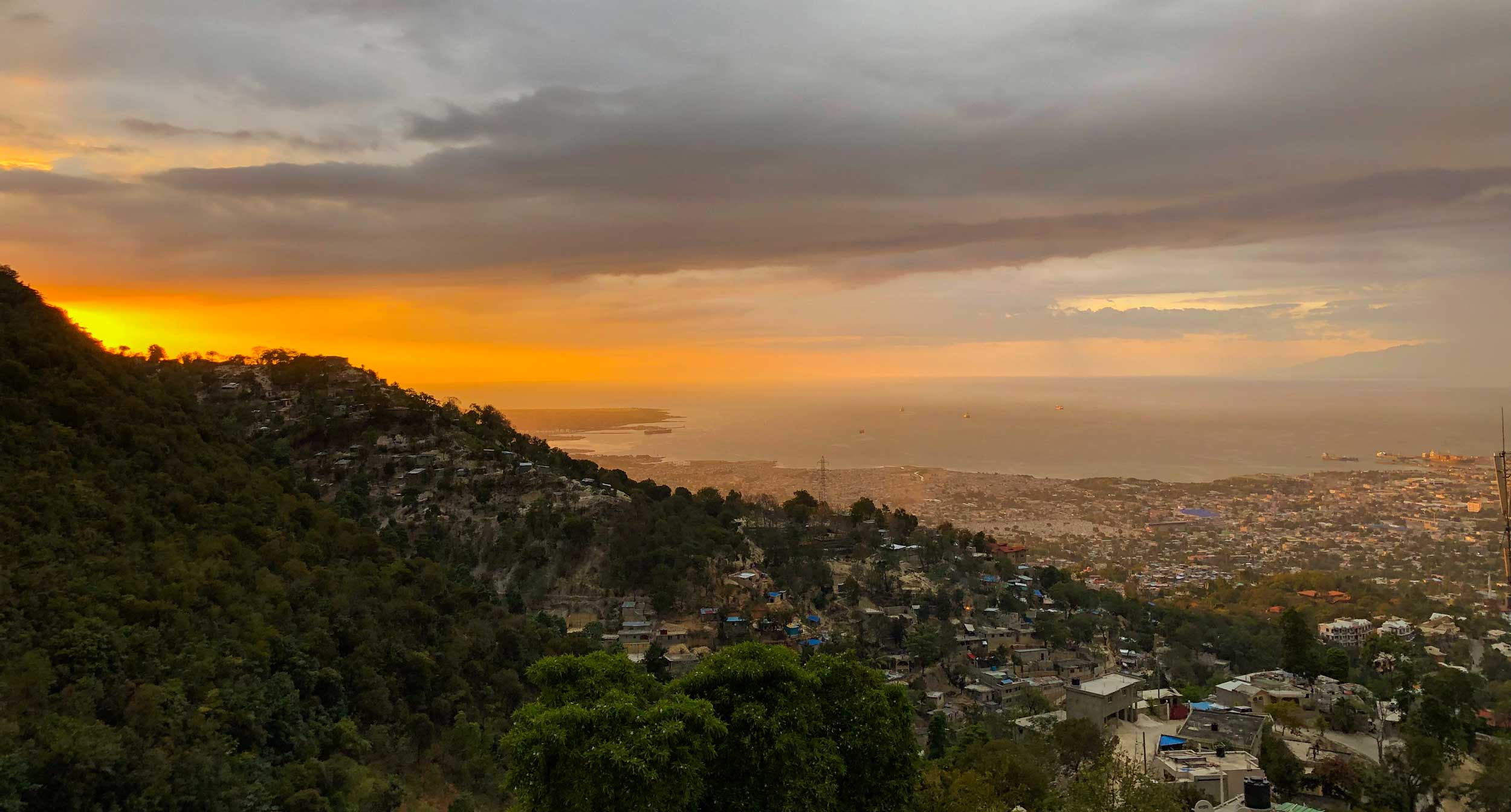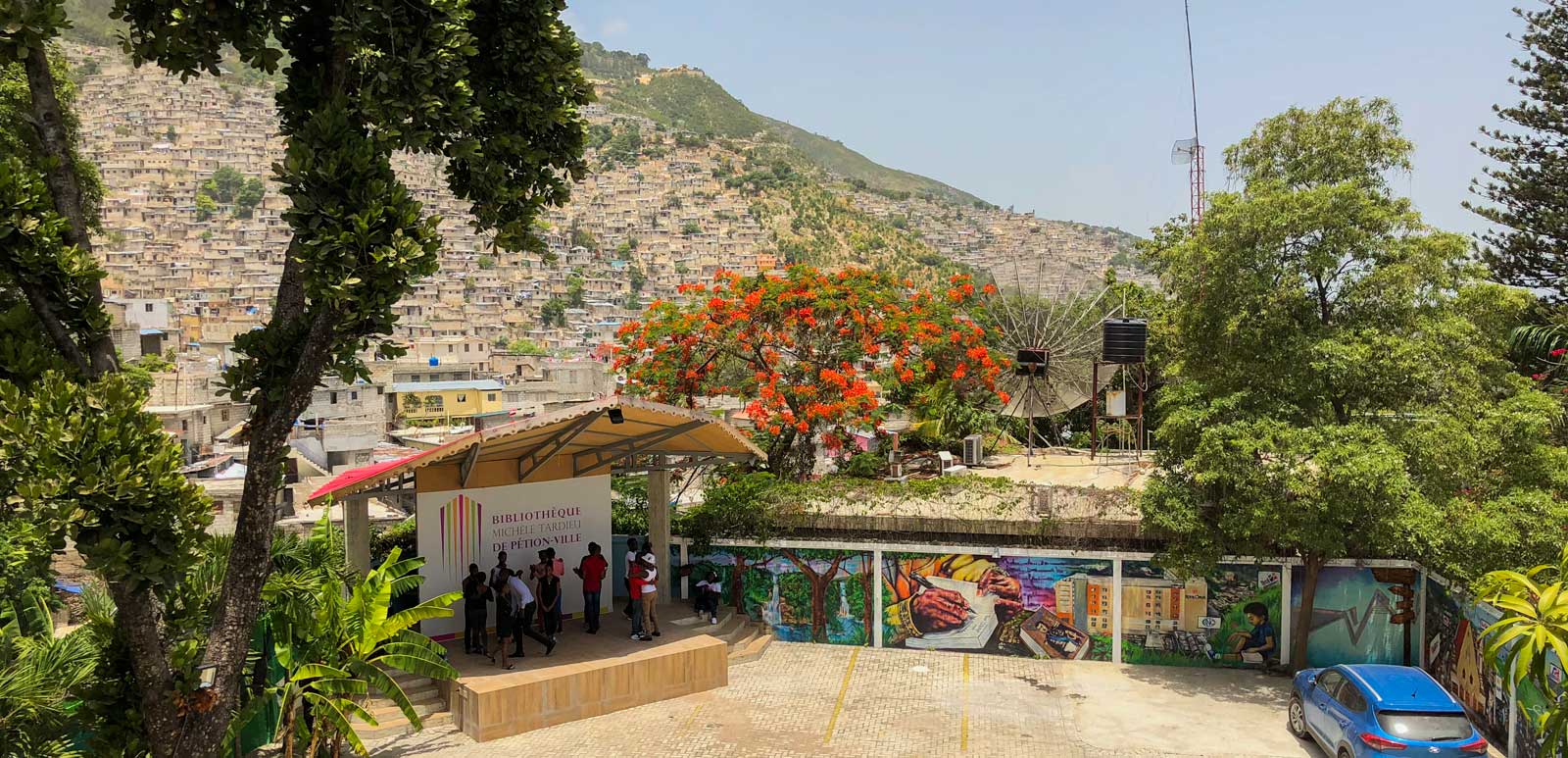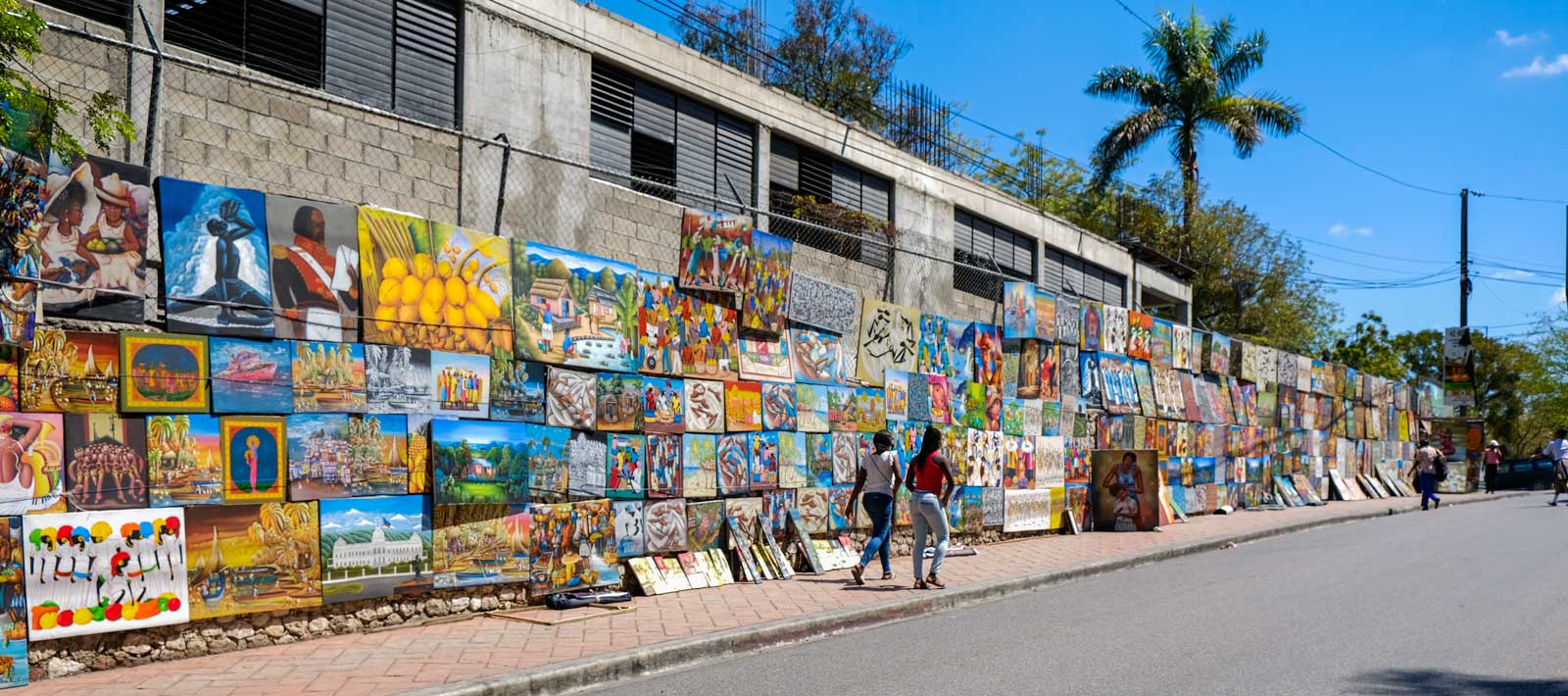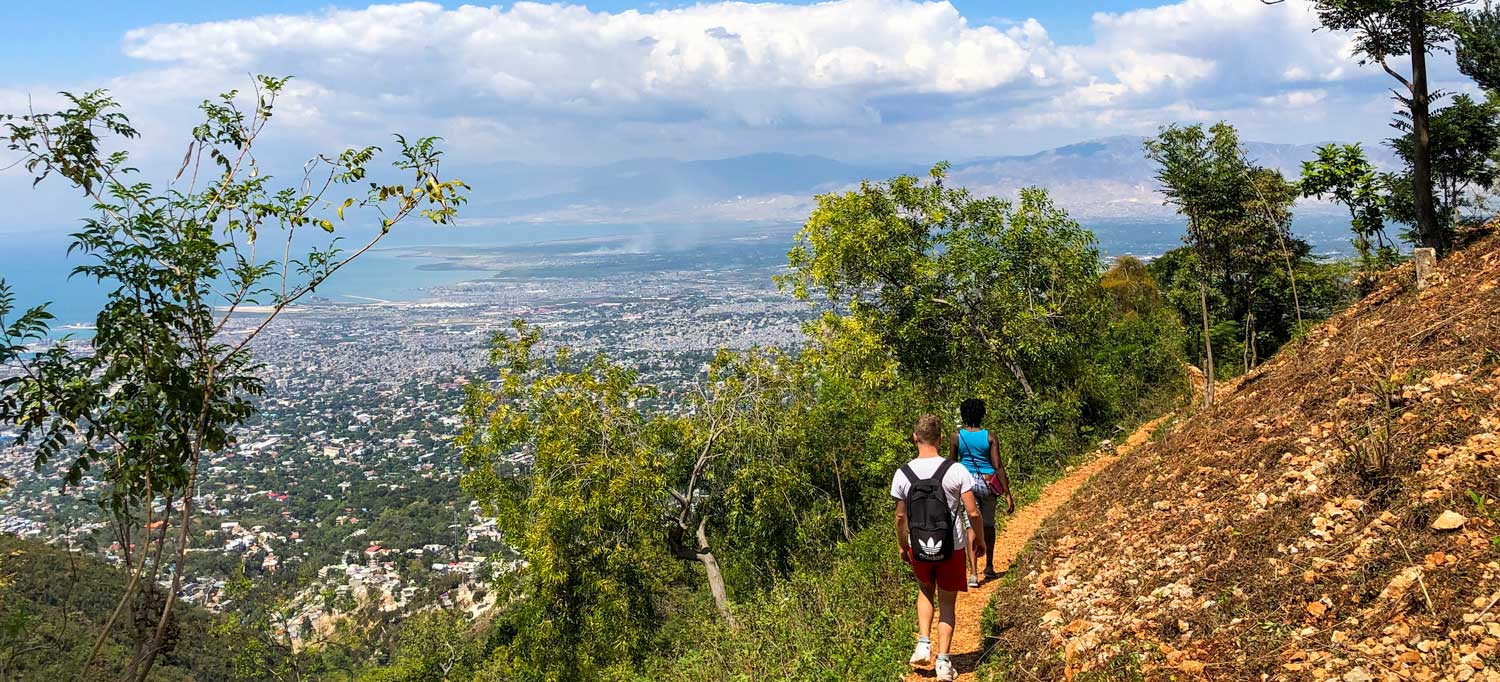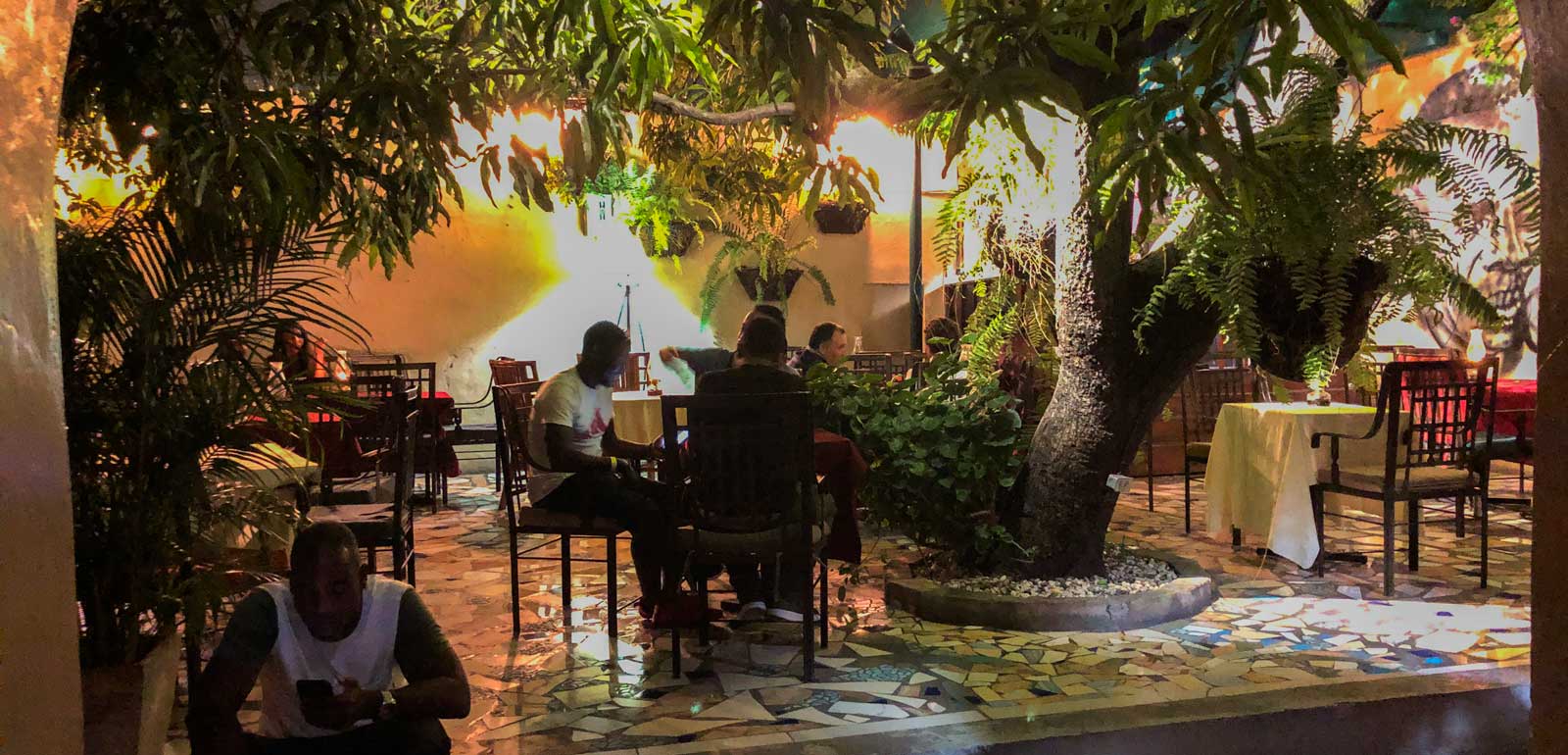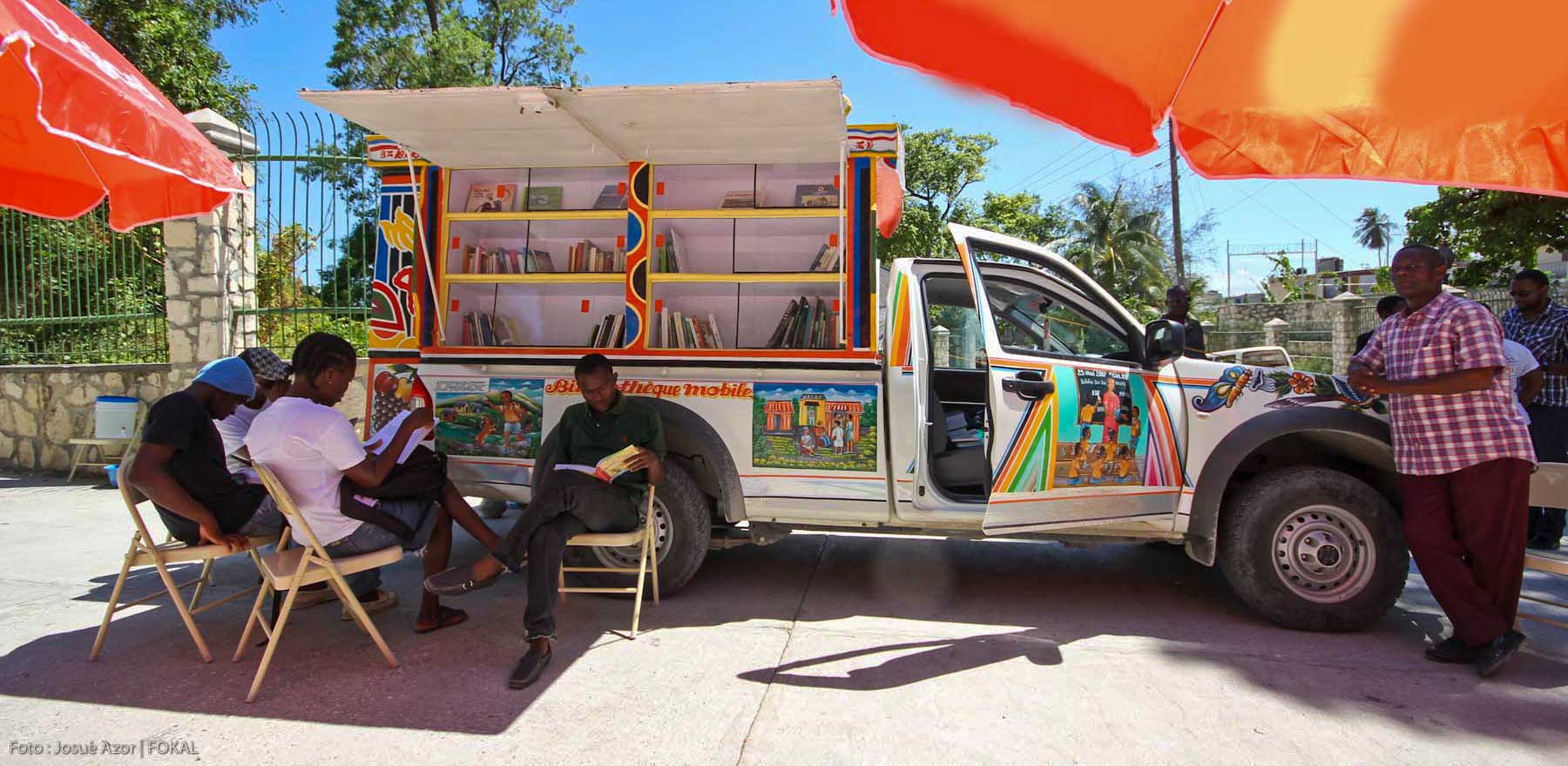
Photo: FOKAL
Situated in the heart of the Caribbean between Jamaica and the Dominican Republic, Haiti has over a thousand miles of coastline with dozens of destination-worthy beaches. While some of them charge entry fees to cover maintenance costs, most are free to wander onto for a day of sun-bathing and swimming.
Beyond gorgeous beaches, Haiti offers a wealth of wildlife, nature, arts and culture for backpackers on a budget. Here’s our guide to free things to do in Haiti, all accessible to fresh-off-the-plane first-time visitors!
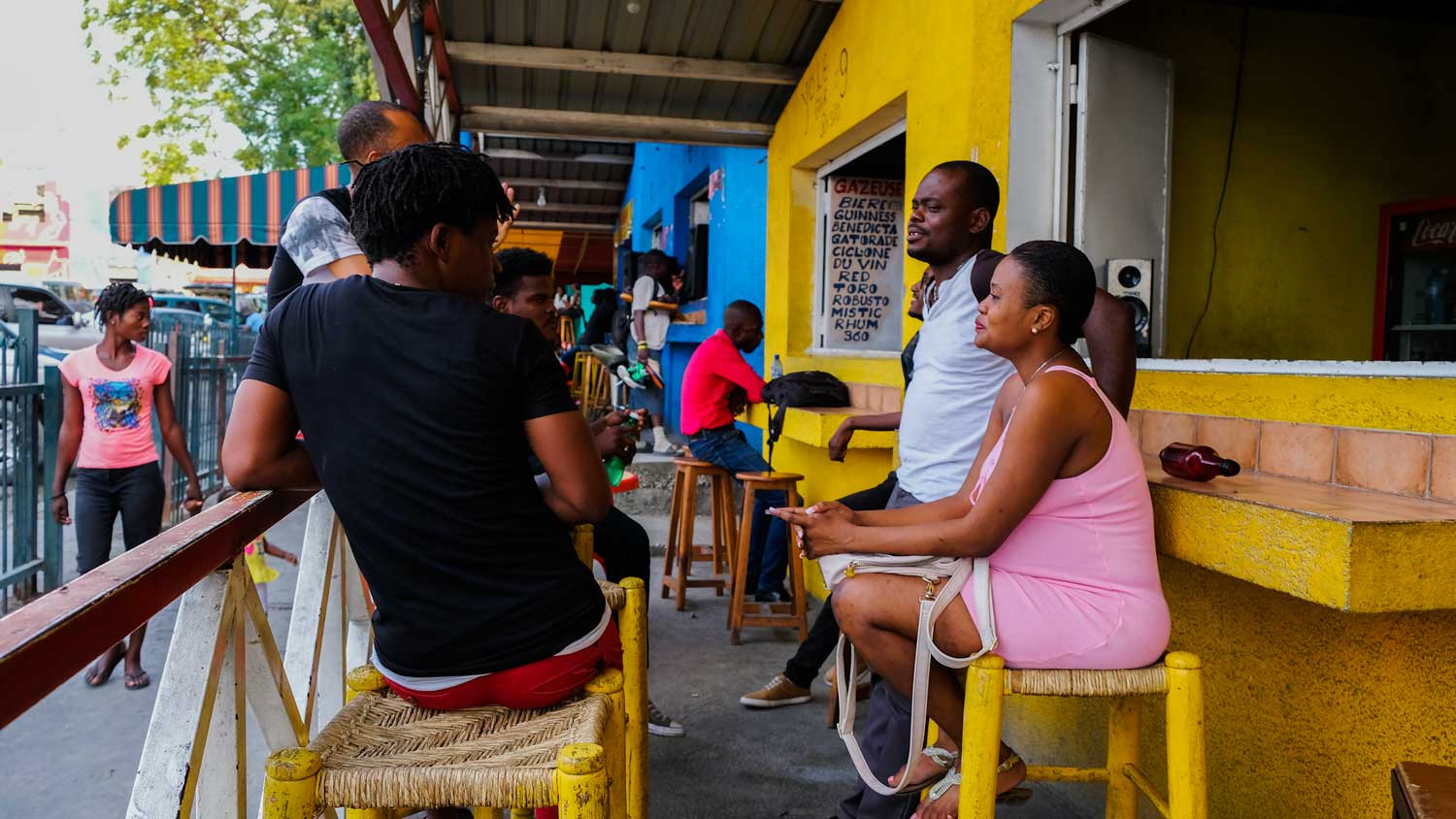
Photo: Franck Fontain
01. Hang out at Champ-de-Mars
The daily life of downtown Port-au-Prince happens in the streets, and Champ-de-Mars is the centre of that life – the beating heart of Haiti’s capital city. Enjoy a morning stroll, get some budget-friendly street food, browse artisan stalls, kick back with an ice-cold Prestige and drink in the activity all around you.
Afternoons here buzz with conversation and music playing from sound systems around the park. On weekdays, white-collar Haitians funnel into Champ de Mars on their lunch breaks from local banks, hotels, government offices and the university.
For free, you can see several statues of Haiti’s founding fathers including Alexander Pétion, Henri Christophe, Jean-Jacques Dessalines, and Toussaint Louverture. The highlight is Marron Inconnu, the iconic statue of the unknown slave blowing a conch-shell trumpet.
Sculpted by Haitian sculptor Albert Mangonès, the statue represents a runaway slave on one knee, arching back to blow into the conch-shell trumpet. In his free hand, he holds a machete; around his ankle is a broken chain. In Haitian history, the sound of blowing into a conch was used to announce a slave’s – or a group of slaves’ – freedom. The statue represents Haiti’s independence from the French, and the world’s first successful black revolution.
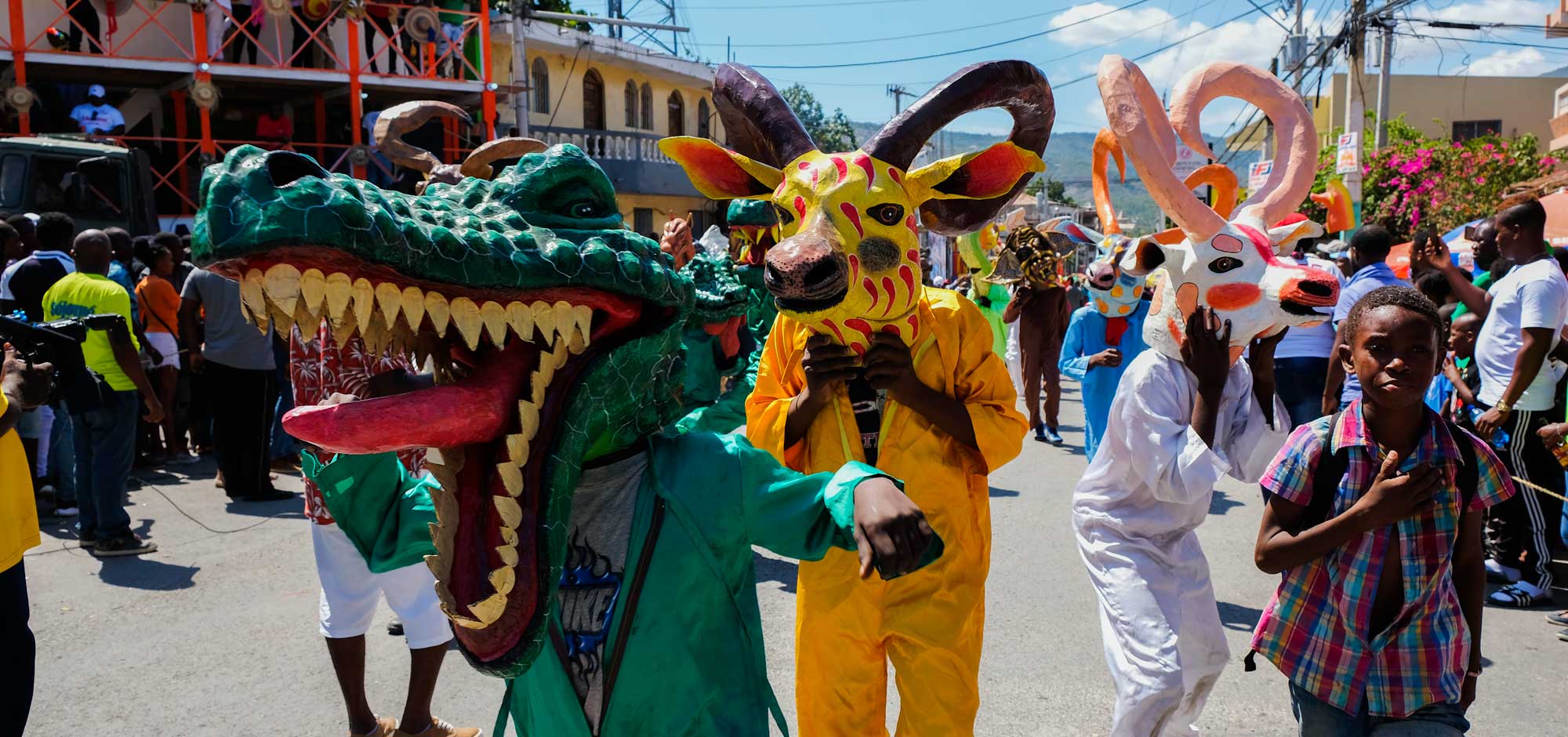
Photo: Franck Fontain
02. Get into the Carnival spirit
If you happen to be in Haiti during Carnival season (the months of January or February until March, depending on when Mardi-Gras lands), pre-carnival Sunday activities are a great way to end your weekend.
Whether you are staying in downtown Port-au-Prince, Cap-Haïtien, Jérémie, or Jacmel you can check out free-roaming rara bands, folks in costume, and festive music throughout the city. Think New-Orleans-during-Mardi-Gras-ambiance!
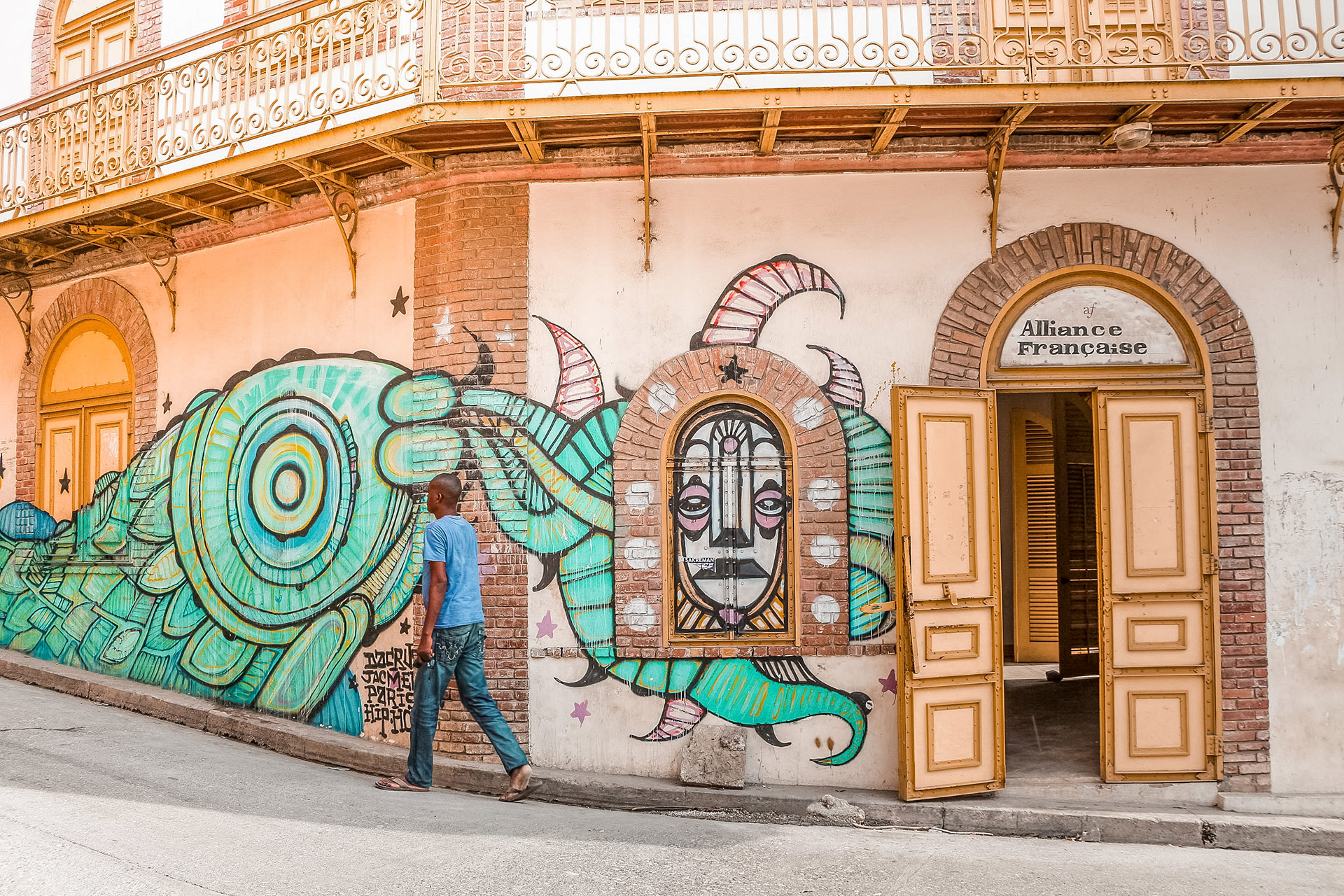
Photo: Amanacer / Emily Bauman
03. Join a free event at Alliance Française in Jacmel or Cap-Haïtien
The city of Jacmel is chock-full of things to do and see, and the centre of it all is Alliance Française in the heart of the city. A cultural center with a branch in Cap-Haïtien as well, Alliance Française hosts musical events, as well as various talks.
Check out the upcoming events near you to find free events and courses where you can dance the night away, brush up on your French, or even try your hand at some Kreyòl!
04. See a play at Festival Quatre Chemins
During the month of November (with small overlaps in October and December), Port-au-Prince is swept up by the Festival Quatre Chemins. A month-long series of conferences and plays, Festival Quatre Chemins is where actors and playwrights come together from around Haiti and across the world to inject fresh life into Haiti’s performing arts scene. Most of the events are free!
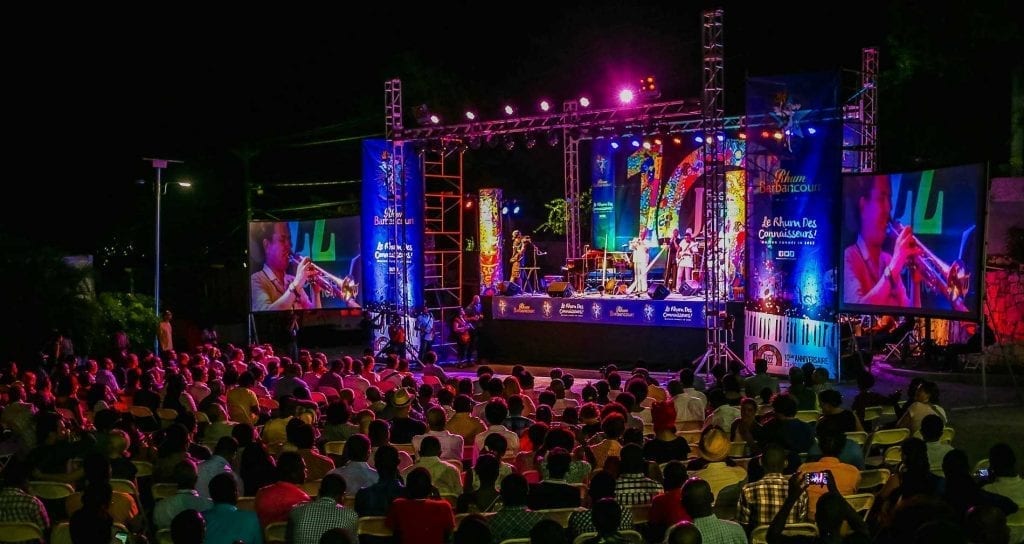
Photo: Josué Azor
05. Listen to jazz for free at PAPJazz
Between the months of January and February, Haiti’s capital city is completely overtaken by music in the form of the Port-au-Prince International Jazz festival! More commonly known as PAPJazz, the festival features jazz acts from several countries around the world, as well as Haitian artists blooming in the field. Bars and restaurants throughout the capital turn into venues, and usually either expect you to buy a meal or drinks, or charge a small entry fee. Travellers on a budget should know about the shows held at Quisqueya University — entry there is free!
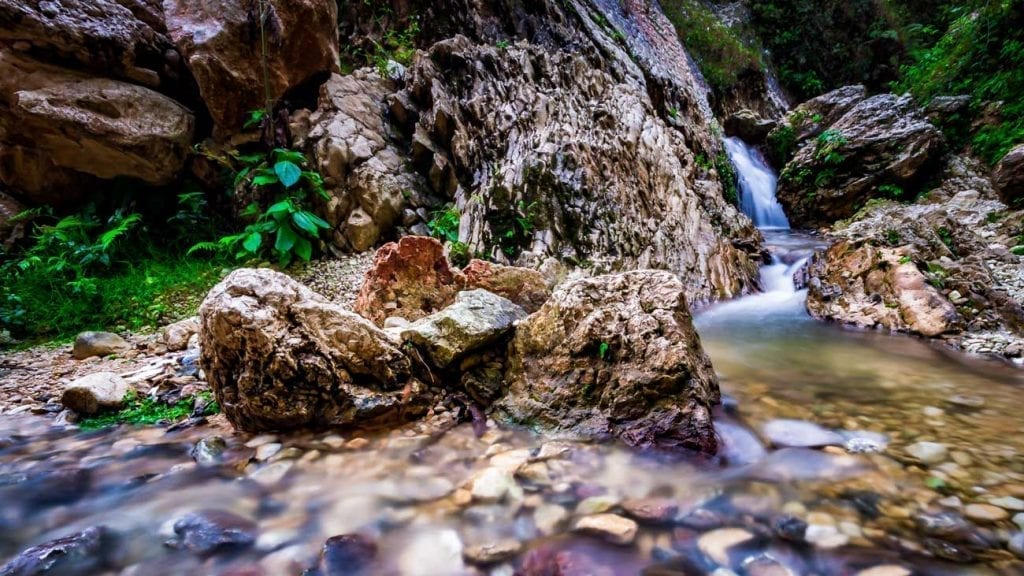
Photo: Verdy Verna
06. Go hiking in Fermathe (don’t miss Cascade Boukan)
Perhaps the best nature hike from Port-au-Prince is to Cascade Boukan, a waterfall in the hills of Fermathe. Get ready to work your lower body muscles as you climb up a summit and then descend to Boukan Valley via a narrow and sometimes steep pass, with the sound of the falls rushing louder as you go.
It’s a decent hike to get there and while not especially difficult, we strongly recommend hiking with someone who knows the way. If you need to hire a guide to take your group, a reasonable price is around 250-500 HTG – less than USD $6.
07. Visit the gallery at Alliance Française, in Jacmel
When not hosting a concert or conference, Alliance Française keeps its doors open to show off some of the most beautiful art in Jacmel. Alliance Française’s popular restaurant is on the top floor, and there is no entrance fee to the gallery which leads up to the restaurant – visitors are welcome to come and browse. The paintings in the gallery change from time to time, so regular visitors will be rewarded by new works.
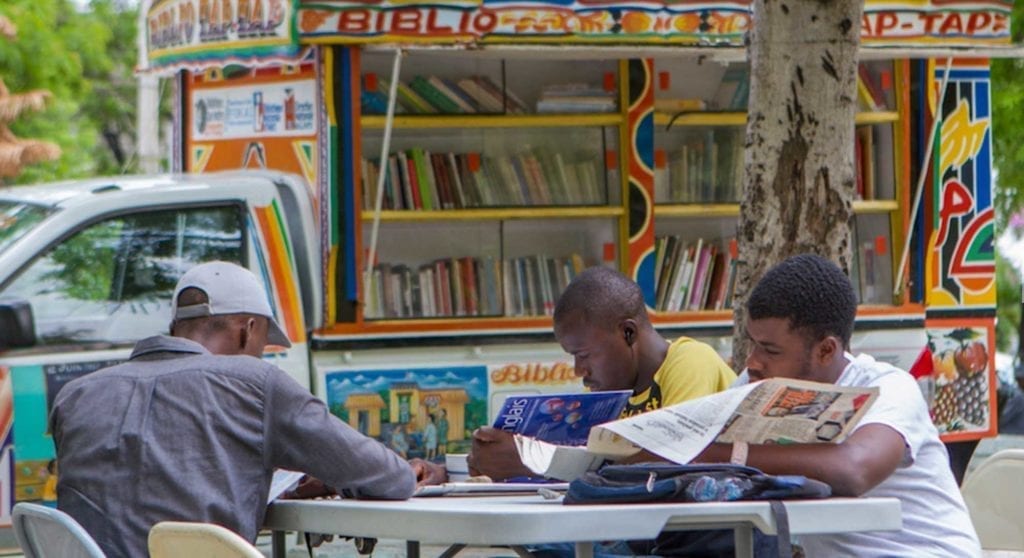
Photo: FOKAL
08. Relax with a book at BiblioTapTap
Backpacking light around the Caribbean with no room for books? Pa gen pwòblèm! – no problem! An initiative launched by the National Book Directorate, BiblioTapTap is a free mobile library that drives through Port-au-Prince and stops at public squares.
If you are staying in Port-au-Prince, you can catch it at Champ-de-Mars, Place Saint-Pierre, or in Delmas 4. It’s as easy as saying hello, having a bit of conversation, and enjoying a book of your choosing at the BiblioTapTap table in the shade.
Written by Kelly Paulemon.
Published June 2019
Top things to see in Haiti

Paradise for your inbox
Your monthly ticket to Haiti awaits! Get first-hand travel tips, the latest news, and inspiring stories delivered straight to your inbox—no spam, just paradise.






